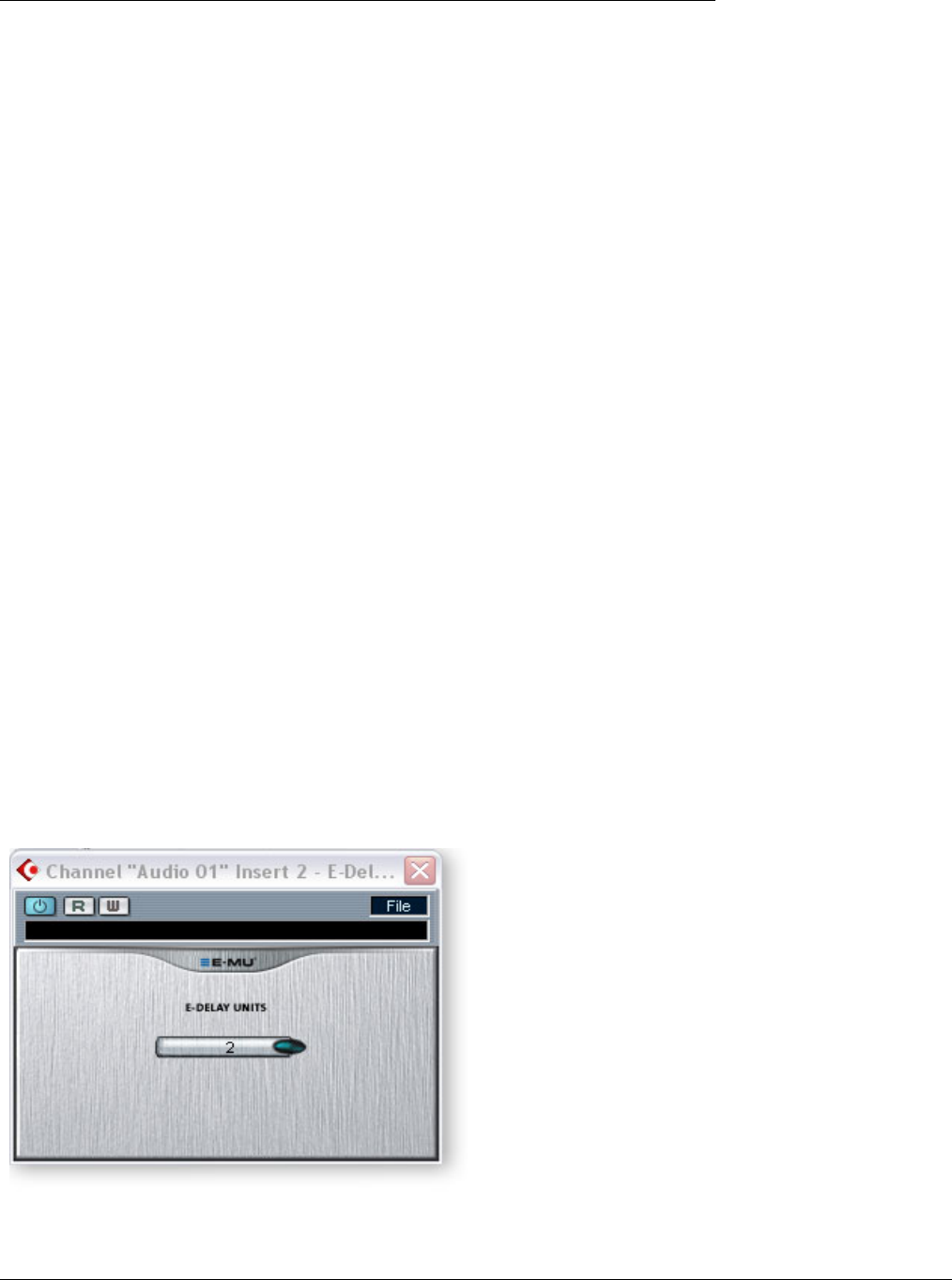
5 - Effects
E-MU VST E-Wire
68 Creative Professional
To Setup and use E-Wire:
Setup PatchMix DSP
1. Open PatchMix DSP application.
2. Insert an ASIO Input mixer strip into PatchMix DSP. (Alternately, you can select
“New Session”, select “E-Wire Example” and skip to step 6.)
3. Mute the strip or turn the Fader all the way down.
4. Insert an ASIO Send plug-in into one of the inserts on your ASIO strip.
5. Name your ASIO strip as an E-Wire strip.
6. Insert the desired PatchMix DSP effects into slots above the ASIO Send.
7. Save the Session.
Setup Cubase
8. Launch Cubase.
9. Instantiate E-Wire in an Insert or Aux Send location within Cubase.
10. Edit the E-Wire plug-in and activate the plug-in by pressing the blue button.
11. Set the ASIO Send and Return on the E-Wire plug-in to match the strip you set up
for E-Wire.
12. Done.
E-Delay Compensation
An E-Delay Compensator must be inserted into any other audio tracks that are not using
E-Wire in order to keep them time-aligned.
13. Simply insert an E-Delay Compensator plug-in into the same insert location you
used for E-Wire on any other audio tracks. That’s it.
E-Delay Compensator
As audio is transferred back and forth between the VST host application and the E-MU
sound hardware, a delay in the audio stream is incurred. Normally this delay is compen-
sated for automatically by the host application, but not all VST host applications
support this automatic compensation.
A host will support PowerFX and E-Wire’s plug-in delay compensation if it supports the
SetInitialDelay feature of the VST 2.0 specification.
